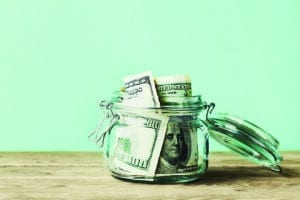The prices of gas, food and most other goods and services jumped in May, raising inflation to a new four-decade high and giving American households no respite from rising costs.
Consumer prices surged 8.6 percent last month from 12 months earlier, faster than April’s year-over-year increase of 8.3 percent, the Labor Department said Friday. The new inflation figure, the biggest yearly increase since December 1981, will heighten pressure on the Federal Reserve to continue raising interest rates aggressively.
The widespread price increases also elevated so-called “core” inflation, a measure that excludes volatile food and energy prices. In May, core prices jumped a sharp 0.6 percent for a second straight month and are now 6 percent above where they were a year ago.
“Virtually every sector has higher-than-normal inflation,” said Ethan Harris, head of global economic research at Bank of America. “It’s made its way into every nook and cranny of the economy. That’s the thing that makes it concerning, because it means it’s likely to persist.”
Gas prices jumped 4 percent just in May and have soared nearly 50 percent from a year ago. They’ve risen further this month. The national average price at the pump reached $4.99 Friday, according to AAA.
The cost of groceries surged nearly 12 percent last month from a year earlier, the biggest such increase since 1979. Restaurant prices jumped 7.4 percent in the past year, the largest 12-month gain since November 1981, reflecting higher costs for food and workers.
Housing costs are also climbing. The government’s shelter index, which includes rents, hotel rates and a measure of what it costs to own a home, increased 5.5 percent in the past year, the most since 1991. Airline fares have skyrocketed nearly 38% in the past year, the sharpest such rise since 1980.
America’s rampant inflation is imposing severe pressures on families, forcing them to pay much more for food, gas and rent and reducing their ability to afford discretionary items, from haircuts to electronics. Lower-income and Black and Hispanic Americans, in particular, are struggling because, on average, a larger proportion of their income is consumed by necessities.
Better Times Coming?
Some evidence in recent weeks had suggested that inflation might be moderating, particularly for long-lasting goods that were caught up in supply chain snarls and shortages last year. But that trend appeared to reverse itself in May, with used car prices rising 1.8 percent after having dropped for three straight months. New car prices also rose. And clothing prices increased after having declined in April.
In light of Friday’s inflation reading, the Fed is all but certain to carry out the fastest series of interest rate hikes in three decades. By sharply raising borrowing costs, the Fed hopes to cool spending and growth enough to curb inflation without tipping the economy into a recession. For the central bank, it will be a difficult balancing act.
The Fed has signaled that it will raise its key short-term rate by a half-point – double the size of the usual hike – next week and again in July. Some investors had hoped the Fed would then dial back its rate increases to a quarter-point increase when it meets in September or perhaps even pause its credit tightening. But with inflation raging hot, investors now increasingly expect yet another half-point hike in September, which would be its fourth since April.
Surveys show that Americans see high inflation as the nation’s top problem, and most disapprove of President Joe Biden’s handling of the economy. Congressional Republicans are hammering Democrats on the issue in the run-up to midterm elections this fall.
A report from the World Bank this week made clear that high inflation is a global problem that threatens to slow economies around the world. Russia’s war in Ukraine has hit hard in Europe, where utility bills, business costs and gasoline prices have surged because of its dependence on Russian oil and natural gas.
For the 19 countries that use the euro currency, inflation fueled by rising food and fuel prices hit a record 8.1 percent last month, leading the European Central Bank to announce Thursday that it will raise interest rates for the first time in 11 years, starting in July and again in September.
In the coming months, goods prices in the United States are expected to finally drop. Many large retailers, including Target, Walmart and Macy’s, have reported that they’re now stuck with too much of the patio furniture, electronics and other goods that they ordered when those items were in heavier demand and will have to discount them.
Even so, rising gas prices are eroding the finances of millions of Americans. Prices at the pump are averaging nearly $5 a gallon nationally and edging closer to the inflation-adjusted record of about $5.40 reached in 2008.
Research by the Bank of America Institute, which uses anonymous data from millions of their customers’ credit and debit card accounts, shows spending on gas eating up a larger share of consumers’ budgets and crowding out their ability to buy other items.
For lower-income households – defined as those with incomes below $50,000 – spending on gas reached nearly 10 percent of all spending on credit and debit cards in the last week of May, the institute said in a report this week. That’s up from about 7.5 percent in February, a steep increase in such a short period.







